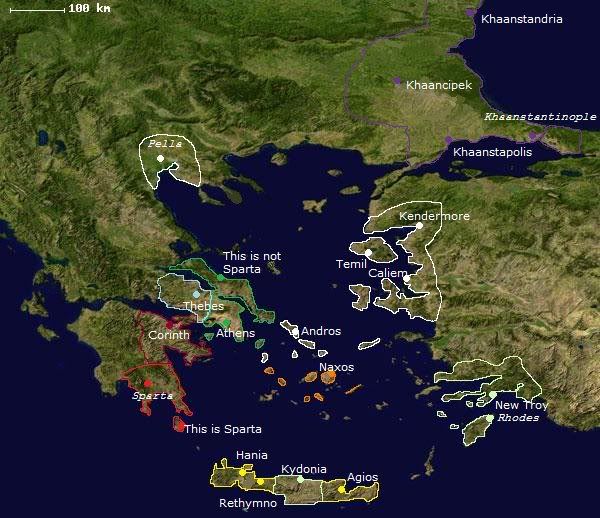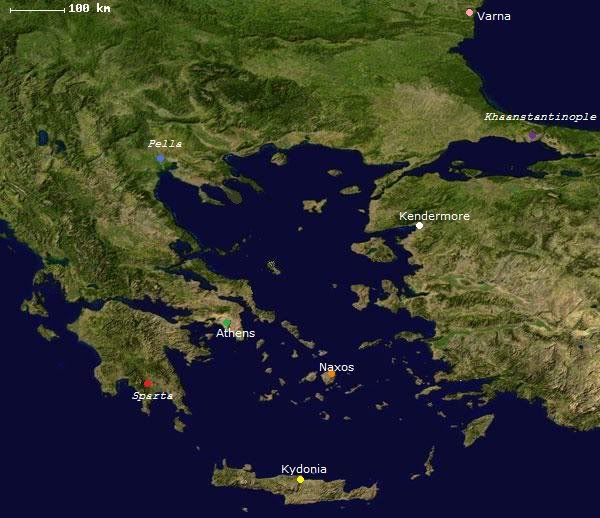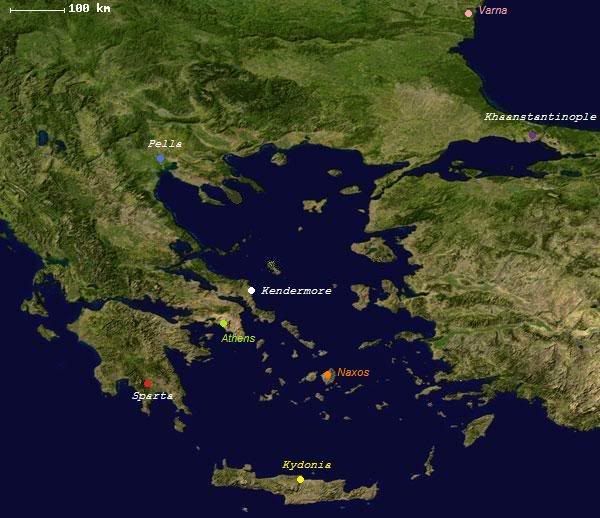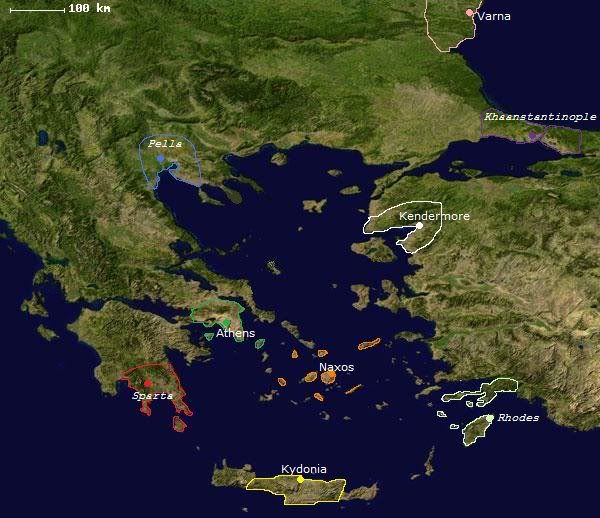Now, the actual battles will be done in a different fashion from the other RoC. They will be done more in the fashion of my WWI interactive, with some slight tweaks.
Walls can built around your city and will cost $500 per level of the city they are built around. Thus, if you build them when your city is at level 1, it will cost you an additional 500$ to upgrade to level 2, or your walls will be worthless. They cut the collateral damage done to the city by half, and provide an offensive and defensive bonus to your troops of +10 to whatever they roll. If they roll a 40, it counts as a 50.
If the city has belonged to an enemy faction within the past three turns, you will receive an offensive and defensive penalty of -10 to whatever you roll, as the populace will be unwilling to give you a hand.
There will be some civillian casualties (collateral) taken during a city battle. They will have a standard defense of 50%, which will be multiplied by the enemy's attack, and another number based on how many turns the battle has lasted. For the first turn, the number will be .25. for the second turn, it will be .15. For every turn thereafter, it will have been reduced to .05. Certain things like walls cut down on collateral damage by another half. For each person lost, you will lose 2 gold from your coffers. Say, in the battle, 50 civillians are killed. You lose 100 gold to pay for damages.
The battles:
Defending Units:
----Cavalry – att, 30-99 – def, 40-99
----Archers – att, 35-99 – def, 20-99
----Infantry – att, 25-99 – def, 50-99
Attacking Units:
----Cavalry – att, 40-99 – def, 30-99
----Archers – att, 45-99 – def, 10-99
----Infantry – att, 35-99 – def, 40-99
The attacking unit rolls a die, and this is taken as the number who successfully attack the defending unit. The defense than rolls, and this is taken as the percent who block it. (thus you use the reverse of the defense to determine casualties) The remaining attacks are then multiplied by .35 to get the casualties. I consider this to be more of a luck factor than anything else. Then the defense attacks, but still gets the benefits of a defensive unit. If more than 1/2 of the entire army is killed at once, the army retreats, and is captured. If less than 1/4 are remaining of those who started the battle, the army retreats, and is captured. The exceptions being if there is a friendly army with them, or if they are attacking a city.
The order of battle is simple. Missiles fire first, then infantry engage, then cavalry. When players order a march, they must also set a priority of attack. casualties are not taken until the end of the round for a semblance that it is all happening at once. When archers attack, there is no rebound from the enemy soldiers. However, when cavalry or infantry attack, there is a counterattack done by the enemy using a different roll. ( with infantry, you don’t usually see it, as the counterattack is also the primary attack)( However, the roll for the counterattack is reduced by 30 due to the haste forced upon the unit. Also, due to their morale boosts, the attacking unit receives a plus ten to their defense for the counterattack) There are six round of combat total. Example -
Caliem’s Capital Army marches on Temil‘s Eastern Army.
Missiles priority is Infantry, Missiles, then Cavalry.
Infantry priority is Infantry, Missiles, then Cavalry.
Cavalry priority is Missiles, Cavalry, then Infantry.
Here's an example of a battle with standard priority.
The Battle of Myan-Mar plains
Round 1:
Caliem (offense) vs. Temil (defense)
500 infantry (Caliem) vs. 250 infantry (Temil)
300 archers vs. 400 archers
200 cavalry vs. 400 cavalry
part one: (Archers)
Caliem's archers roll 50 att. Temil's infantry rolls 90 defense. 300 x .5 x .1 x .35 = 5 Temilan Infantry casualties (the result is always rounded off)
Temil's archers roll 97 att. Caliem's infantry roll 42 defense. 400 x .97 x .58 x .35 = 79 Caliem Infantry casualties
part two: (Infantry)
Caliem's infantry roll 40 att. Temil's infantry roll 50 def. 35 Temilan Infantry casualties
Temil infantry roll 60. Caliem infantry roll 70. 16 Caliem infantry casualties
part three: (cavalry)
Caliem cav roll 70. Temil archers roll 40. 29 Temil archer casualties
(counterattack)Temil archers rolls 60 (it was 90, but reduced by 30 makes it 60). Caliem cav roll 50(was 40). 42 Caliem cavalry casualties
Temil cav roll 80. Caliem archer roll 50. 56 Caliem archer casualties.
Caliem archers roll 5. Temil cav roll 85. 1 Temil cavalry casualty
These are tallied in to make round two, and after that, round three and so forth.
It is also possible to fortify regions with castles, castles are the only places where large standing armies can be housed. They can be fortified from a level of 1-3. Castles cost 2,000 gold to build, 1,000 gold to upgrade, and can hold up to 10,000 troops soldiers per level, whereas a city can only house 2000 per level. They can be built anywhere.
When ordering armies to march, name the army itself and its target or its destination. I will path the quickest route there and place the armies location 1 turn’s march from its starting point.
One turn’s marching distance is roughly 250 kilometers.
Castles that are besieged can either be destroyed or occupied. Cities that are captured can either be occupied, sacked or exterminated. Occupying cities keep them under your control. Sacking cities gives you 4 turns worth of it’s income but drops it to a level 1 city. Exterminating a city erases it from the map, gives you 2 turns worth of it’s income, and prompts guerrilla warfare from the enemy nation, and possibly even from your own. There may even be assassination attempts.
Military Orders -
- Build wall
- Build Castle
- March Army
- Occupy / Destroy captured castle.
- Occupy / Sack / Exterminate captured city







 Reply With Quote
Reply With Quote




















 . That means you and me are now trading partners right?
. That means you and me are now trading partners right?

Bookmarks